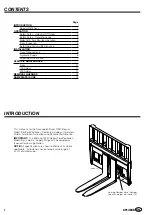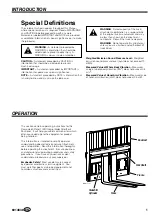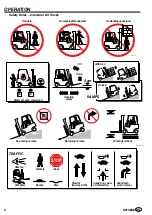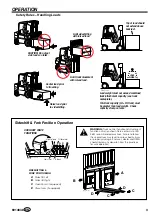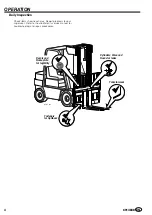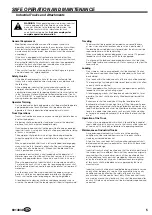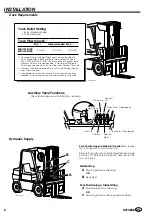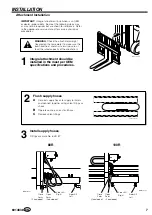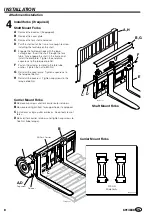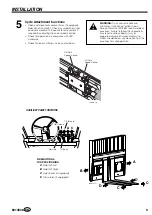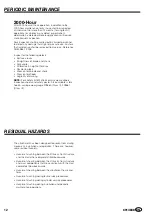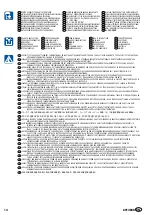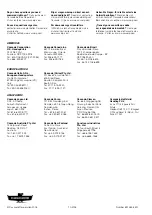
12
6914838 EN
2000-Hour
After 2000 hours of truck operation, in addition to the
1000-hour maintenance, forks in use shall be inspected
at intervals of not more than 12 months (for single shift
operations) or whenever any defect or permanent
deformation is detected. Severe applications will require
more frequent inspection.
Fork inspection shall be carried out by trained personnel
to detect any damage that might impair safe use. Any fork
that is defective shall be removed from service. Reference
ANSI B56.1-2005.
Inspect for the following defects:
• Surface cracks
• Straightness of blade and shank
• Fork angle
• Difference in height of fork tips
• Positioning lock
• Wear on fork blade and shank
• Wear on fork hooks
• Legibility of marking
NOTE:
Fork Safety Kit 3014162 contains wear calipers,
inspection sheets and safety poster. Also available is fork
hook & carriage wear gauge 209560 (Class II), 209561
(Class III).
PERIODIC MAINTENANCE
RESIDUAL HAZARDS
• Hazard of crushing between the lift truck’s front structure
and the mast when completely tilted backwards.
• Hazard of shearing between the lift truck’s front structure
and mast components that move vertically with the mast
completely tilted backwards.
• Hazard of shearing between the attachment frame and
forks.
• Hazard of crushing during fork service procedures.
• Hazard of crushing during cylinder service procedures.
• Hazard of crushing during installation and periodic
maintenance operations.
The attachment has been designed to prevent risks during
movement, installation and operation. There are, however,
some residual hazards:
Summary of Contents for 100R
Page 17: ...Blank...


